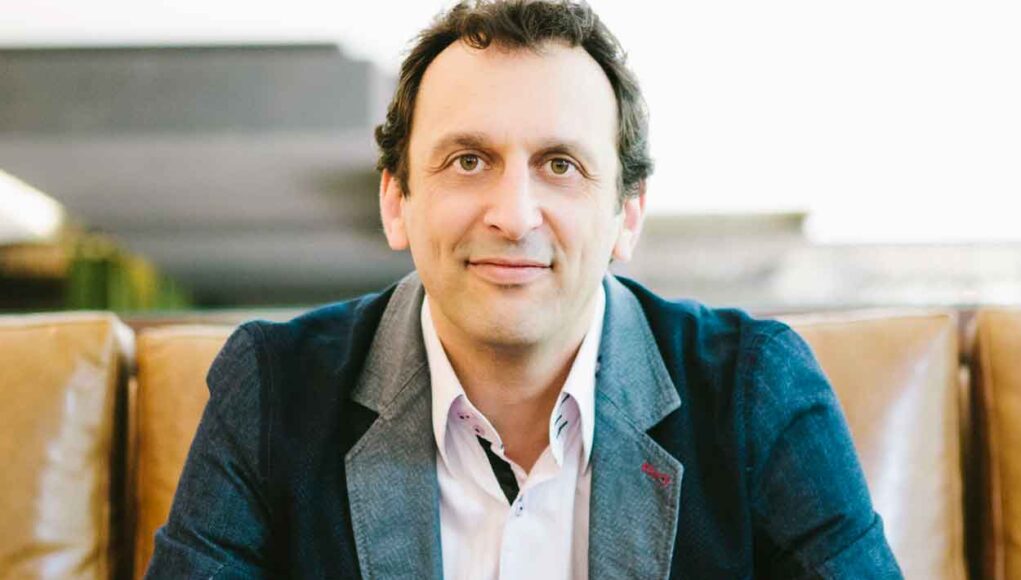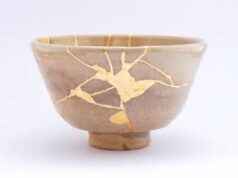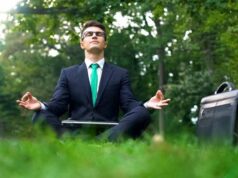How can we Practice Mindful Living during Times of Transition?
“Fear is not real. The only place that fear can exist is in our thoughts of the future. It is the product of our imagination, causing us to fear things that do not at present and may not ever exist. That is near insanity. Now do not misunderstand me, danger is very real, but fear is a choice.”
This is a quote from the movie, After Earth. Cypher Raige, the father (Will Smith) is talking to his son, Kitai (Jaden Smith).
Today, we are all experiencing a global pandemic. The whole planet is concerned and all humans are somehow impacted. At the start of the pandemic, I had a number of conversations with friends and business colleagues as fear and anxiety had risen suddenly, and people were shifting in their behaviors. In Australia, we saw toilet-roll hoarding. I went shopping with my son at the start of the pandemic to witness empty aisles that used to be filled with vegetables, milk and dairy, eggs, biscuits, and cookies It was surreal.
People were acting out of fear.
As Cypher states in the movie After Earth, we don’t have to act from a place of fear. When we are focused on mindful living we can actively choose to behave differently.
We can operate from a place of love.
In the context of teaching meditation online, I receive interesting insights about our reactions based on fear and anxiety.
In this time of confinement and #COVID19, there is a lot of additional stress. People are dying, some are sick and under intensive care, fighting for their lives. Others have some members of their family in such a situation. And most of us have felt the impact of the #Coronavirus on our daily lives and livelihood.
Most of us feel a sense of loss.
It moreover seems like we are collectively going through a grieving process. And we all need to address it, each of us in our own special way, within our own timeframe, because we all grieve differently.
_____
READ ALSO: Heads Up Guys- Men, Stress, and Mindfulness at Work
_____
In this time, in particular, we need to take care of ourselves, so that we can take care of others. It’s hard to pour from an empty cup, so personal time and self-care are important. This is a marathon: it will take time.
It’s important to know how most people are living this event like a trauma, and trauma takes from twelve to eighteen months to process, once you engage with it.
We need to acknowledge the long-term effects of what is currently happening. We need to prepare for it.
Noticing how anxiety levels are rising due to Covid19, I started sharing one of my favorite meditation practices for the art of mindfulness and mindful living: Loving-Kindness.
Loving Kindness: A Daily Meditation Practice
I enjoy this specific meditation because it’s based on an experience we all have: the experience of unconditional love.
Most of us have some experience of Love, from the relative emotion to the ultimate manifestation of love. The relative manifestation of love can veer from kindness to being fond of someone. It’s essentially emotionally based.
Ultimate Love is really without feeling. It is an all-pervasive Loving-Kindness toward everyone, equally. There is this intention of wanting others to be happy, wanting others to enjoy happiness.
_____
INTRODUCE YOUR LEADERS AND EMPLOYERS TO WEEKLY ONLINE MINDFULNESS SESSIONS
_____
The experience of unconditional love can help us on the journey toward ultimate love. The process of the Loving-Kindness meditation can be broken down into four steps:
First, you need to recall an event when you felt unconditional love. Before you ask -yes, we do all experience that at some stage. I think it is part of the human condition, as is the experience of trauma. Some people would struggle at this stage, but if you apply your mind to it, you will find that moment in time. One participant in a Loving-Kindness retreat said it was how one of her dogs in the past looked at her one day. Others had a family member or a close friend. In my case, it was my grandmother.
Then, you recall the feeling you had at that time. Next, you then focus on the feeling itself.
Step three is expanding this feeling. You need to make it as big as you can. Try to multiply it.
Finally, in step four, you remain in the expanse of the feeling and you just say to yourself: “may I be well, may I be happy”.
This is the essence of the Loving-Kindness practice. There is more to it, but this can be a good start and a good foundation for it.
This meditation can help in your journey to unconditional love.
Also, at this time when fear and outrage are displayed in front of us, it is a good way to take care of yourself and others.
How can we then bring this unconditional love into our daily lives? How can we operate from a place of love in our families or in business?
I believe we need to start with two principles for mindful living: self-awareness and understanding our intentions.
Self-Awareness & Intentions
Self-awareness is necessary: you need to understand yourself well enough, understand and manage your emotional states, so that you aren’t played by them any longer. There are different ways to gain self-awareness. I can just talk about the one I know, which is meditation.
The true goal of meditation is awakening
For me, meditation isn’t transactional, meaning that; you won’t “get” anything by meditating. Meditation is about embracing with equanimity all aspects of your mind, with the goal of enlightenment. I am aware there are many types of meditations out there, with all kinds of promises. I think they may even be counterproductive in the long run, but this is for another day and another discussion.
_____
READ ALSO: Otto Scharmer: The World of Today and Tomorrow
_____
The true goal of meditation is awakening. That is, knowing yourself so well, and having such a state of awareness that you arrive at a stage of eternal awareness. In that context, I see three steps in the meditation journey.
The Three Steps in the Meditation Journey
The first one is about calm abiding. At this stage, you start with mindfulness exercises, often a focus on the breath, then you discover how distracted you are until you are able to reveal the aware aspect of your mind and get some calm.
The second stage is seeing clearly. Now that your mind is calmer, you are able to see your thoughts and emotions more clearly. You can see the stories you tell yourself. And slowly, you can deconstruct those patterns and free them.
It’s easier to observe one’s mind from a calm and spacious state. Then, one can see one’s thoughts and emotions without attachment or rejection.
The third stage starts with the encounter of a qualified spiritual teacher, who will introduce you to the ultimate nature of your mind. This encounter will happen when you ‘do the work’, that is, put meditation into practice. The ‘nature of your mind’ is not something that you don’t already have – you do. You just don’t see it yet. Or can’t see it yet. In this introduction, you are presented to your mind. Then, you recognize it, and your meditation changes. Your goal now is to work with the mind directly and this leads to awakening.
This will help with self-awareness.
_____
READ ALSO: Self-Awareness and Self-Handicapping Leadership
_____
Understanding your Intention
Where the first principle is about increasing self-awareness, the second principle is about understanding your intention.
To operate from a place of love, you need to have the intention of benefitting others; wishing them happiness. The size of your actions does not really matter but the intention does.
Now, you need to ask yourself the question:
Will I continue to operate from a place of fear?
Or
Will I now operate from a place of love?
As Albert Einstein said:
“The most important decision we make is whether we believe we live in a friendly or hostile universe.”
Today we all experience challenges; we know the world we knew has changed. We all experience uncertainty.
We need to choose wisely how we respond in this context.
This reflection alone can shift your life. If you think the Universe is hostile, then you may fall into “victim mode” and feel disempowered.
On the contrary, when you know that the Universe is friendly, then you can relax and be spacious, because you know that ultimately you will be fine. This doesn’t mean that you’ll get what you want; you may just get what you need instead.
One other positive aspect of trusting the Universe is that you can care for others and be of service, as you know that somehow the Universe will have your back. It can feel quite empowering to take care of others.
Masculine and Feminine Energies
When talking about love, I would like to also mention the principles of masculine and feminine energies. It’s important to understand and live those two principles. I usually don’t talk about gender; I would rather talk about masculine and feminine energy. To be in a state of love, one has to embrace the two. We’ve been under the control of masculine energy for too long.
_____
READ ALSO: Beyond Mindfulness and Work/Life Balance
_____
I would define masculine energy as exploration and feminine energy as nurturing. We have been exploring, with no regard for nurture: this explains the state of the planet and the state of mind of people: the level of stress and anxiety is as high as it has ever been. It is time to balance those two. We can explore and nurture! Close your eyes and imagine what kind of world we would have, if we were able to nurture every single exploration. Again, it starts with you. You need to find for yourself what is that balance within you – and then –only then – can you go out and act in this world.
I know this is a stressful time for most of us.
I wish that you will take the time to reflect deeply on the question of energy and that you will embody the core belief that we all can get better after this experience. Better humans for a better society, on a better planet.
How is that relating to my design work, you may ask?
When you live from a place of love, you want to protect the environment and find a way, your unique way, to benefit people. As an industrial designer, it is important for me to design products that are sustainable and that benefit all stakeholders in this ecosystem. This is why I have been promoting design for the triple bottom line: people, planet, and profit.
I am currently working on the next step of this journey, something I have named “regenerative design”, an idea I have mentioned in my TEDx talk already: designing new products and services that give back to the ecosystem more than they take, in order to repair the damages done to our planet.
To conclude, I would like to propose a new perspective on the year 2020. I am hearing every day that it is a terrible year, that people just want to erase it from their lives, that it is a bad year, etc.
I am aware of the real pains that some people face and do not want to deny this in any shape or form.
At the same time, I would like to step back and look at the hero’s journey.
From an original state of “the ordinary world”, something happens to the hero who is moved into his call to adventure.
_____
READ ALSO: Henry Mintzberg: The Epidemic of Managing without Soul
_____
Discomfort is present, inconveniences, but the hero pushes forward and entre the second stage: initiation, where he learns new ways and builds a new paradigm. Then, he returns to share his wisdom and pass on his knowledge.
For the last two hundred years, we have been building our ordinary world; perhaps getting a bit too comfortable with it.
What if 2020 was our call to adventure?
If so, there is nothing more than love in this discomfort, we just need to embrace our calling, and move toward the initiation phase as fast as we can to build a better world.
Let’s see 2020 as a humankind call to adventure. Let’s work from a place of love, to benefit all beings and this planet. We each have our own unique skills: explore yours, take action, and make an impact!
___
201119








